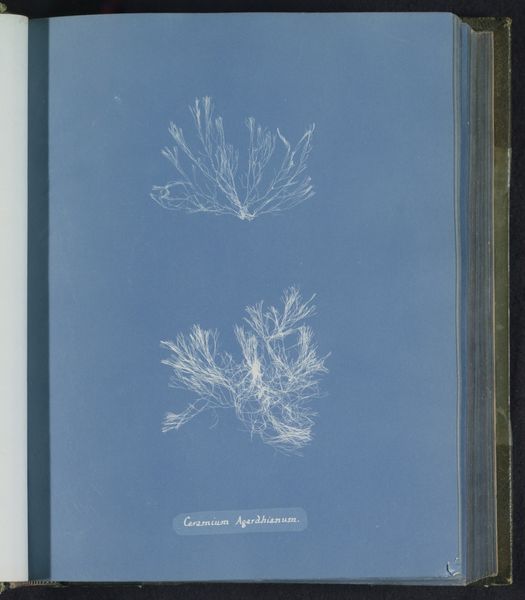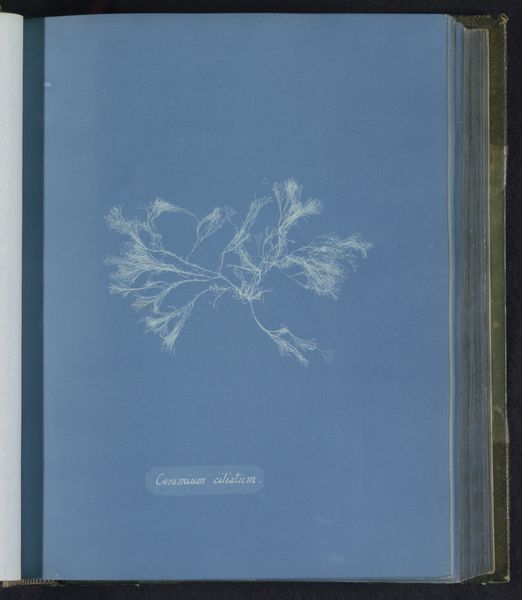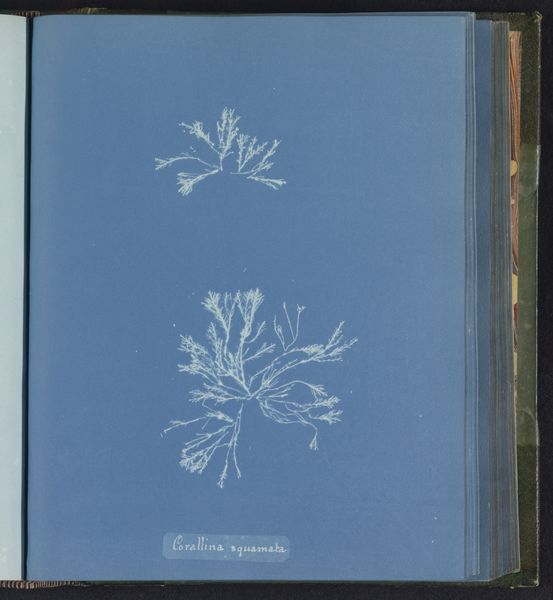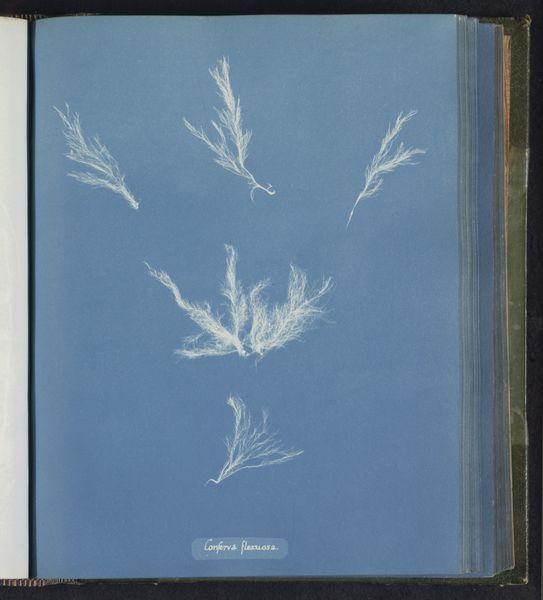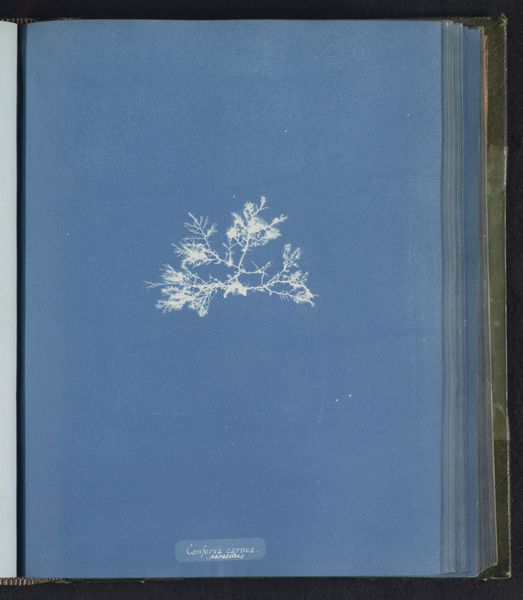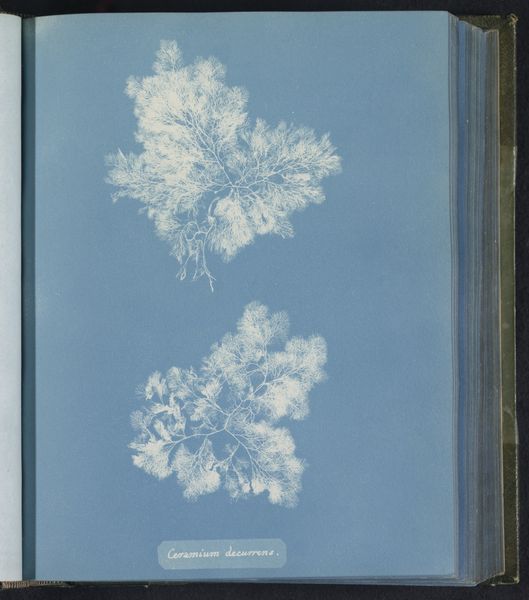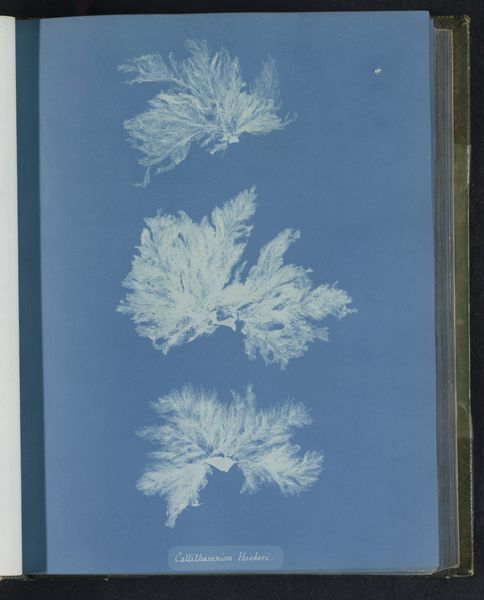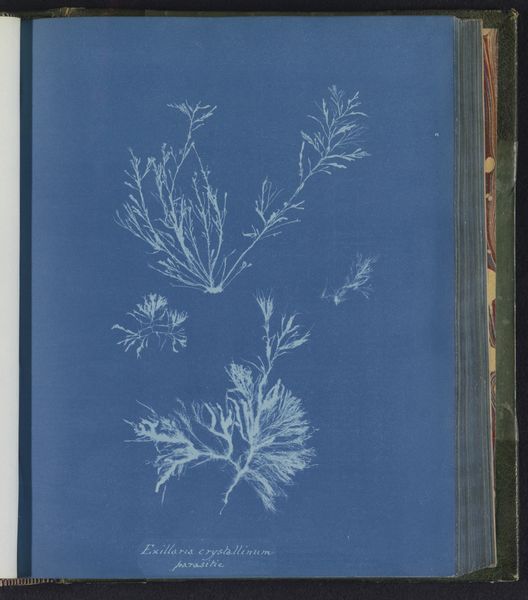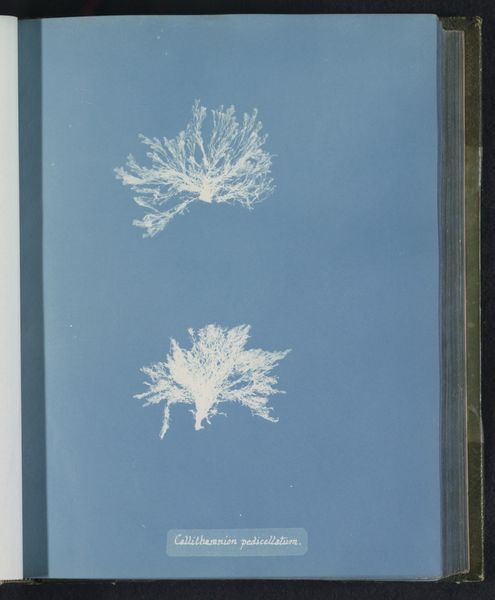
print, cyanotype, photography
#
still-life-photography
#
organic
# print
#
cyanotype
#
photography
#
naturalism
Dimensions: height 250 mm, width 200 mm
Copyright: Rijks Museum: Open Domain
Editor: Here we have Anna Atkins’ “Callithamnion turneri,” a cyanotype from between 1843 and 1853. The stark white algae against the deep blue is quite striking. It’s interesting to see such a scientific image presented as art. What do you make of this, thinking about it as a physical object? Curator: It’s crucial to consider the cyanotype process itself. Atkins didn’t just *make* art; she engaged in a whole new *means* of image production. Think about the materiality: light-sensitive chemicals, the precise timing of exposure, the quality of the paper itself. Each step involved labor, and the final image is inseparable from that process. How does that industrial element affect how we categorize art versus science? Editor: That's a great point. I hadn't really considered the labour involved. It's easy to just see it as a "print," and forget it's also an experiment in early photographic technology. Do you think this challenges conventional art categories? Curator: Absolutely. Atkins uses photography not just to represent nature, but to classify and document it. The image is almost a byproduct of this intense labour, so it really makes you question the divide between art, craft, and scientific endeavor, and the materials are intrinsic to each designation. It forces us to reconsider value judgments in art history; this goes beyond aesthetics and highlights how process and materials affect how art is categorized and consumed. It encourages dialogue, even today. Editor: I’d never thought about it like that before – the means of production as a way to blur traditional lines. Curator: And it demands we recognize how those methods directly speak to the purpose, message, and historical context of this piece. This is a space of art *and* science. Editor: So, appreciating both the artistic elements and the science behind this print, provides a wider lens in appreciating the whole process of the image. Curator: Exactly.
Comments
No comments
Be the first to comment and join the conversation on the ultimate creative platform.
